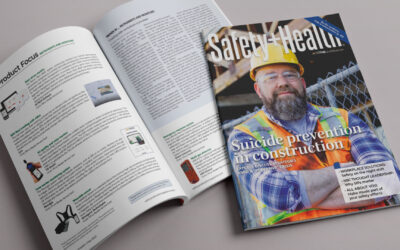It’s no secret that the modern-day labor classification systems are not perfect. Industrial employers are stuck using archaic systems to differentiate their operations for regulatory compliance and insurance needs. All too often, they are left to question the fairness and equity of these classifications processes as a result.
Trades, job functions, job titles and insurance codes are all used to standardize the activities performed. The workers’ compensation industry created a complicated formula using industry codes (NAICS) and sub-category NCCI codes to measure, track and predict injury cost based upon activity classification.
Ultimately, the goal of the entire NCCI system is to ascribe the proper expected injury cost to each hour worked – to benchmark, measure and price injury risk for workers’ compensation insurance.
At scale, the law of large numbers ensures that insurance carriers maintain price accuracy regardless of classification variance.
As a premium auditor for four years, I spent my time verifying and classifying payroll based upon the NCCI’s scopes manual. Each NCCI code has a unique rate, classifying employees in the correct code is crucial for pricing workers’ compensation coverage. Assigning the proper NCCI code is more art than science.

Take for example the beverage distribution industry, one of America’s oldest and more regulated industries, has the following NCCI classification language. Remember, the goal of this system is to price insurance based upon expected level of risk.
If your head hurts after reading that, you’re not alone. The workers’ compensation classification system is purposefully ambiguous, requiring skilled professionals to properly audit. Subjectively decoding the scopes manual and ascribing all levels of risk to four different rates leaves significant room for variance. At scale, the law of large numbers ensures that insurance carriers maintain price accuracy regardless of classification variance.
However, at a granular level, how are employers impacted by this variance? Are these employees all at the same risk for injury? And if not, how do these classification inaccuracies impact employer insurance costs?
A supervisor who spends a few hours on the floor each week, a skilled forklift operator who assists in maintenance a few times a week, a driver whose route requires a longer or more treacherous unloading environment, two pickers at different locations — in different environments, picking different products — all of these labor and environmental nuances create a wide spectrum of injury risk. Historically a broad sweeping classification system was the best system we had.
The advent of technology, and specifically wearable technology, has inundated the risk management community with activity classification data. Employers and risk managers now have a detailed view of the activity each employee is performing. Step counts, heart rate, ergonomic behavior, miles driven, location in the facility, and much more are available and provide a road map to an injury risk classification process that is personalized and accurate down to the individual.
Whether it’s for insurance, labor laws, or performance measuring, improper activity classification has an impact on all facets of your business. The traditional methods rely upon anecdotal and subjective analysis, resulting in a significant margin of inefficiency. For example, the Workers’ Comp NCCI rating system charges the same rate to the route driver who climbs 300 steps a day carrying cases and the route supervisor.
At StrongArm, utilizing employee specific behavior data, we enable classification engines, such as insurance carriers, to differentiate activity based upon real time activity – Number of lifts, bend, twist, and tilt behavior, and much more. Ultimately, leading to a more accurate and equitable system.




